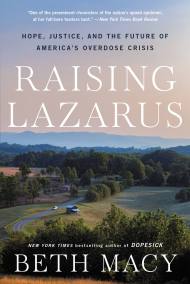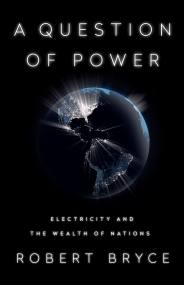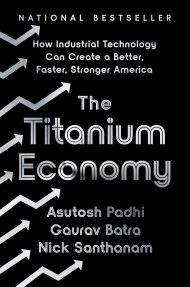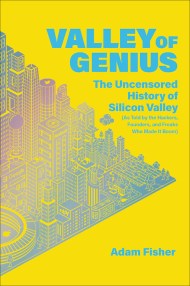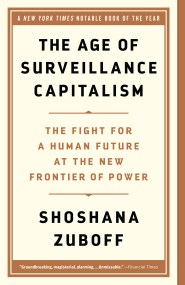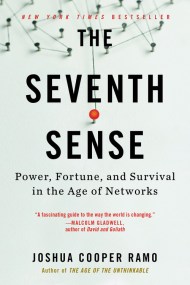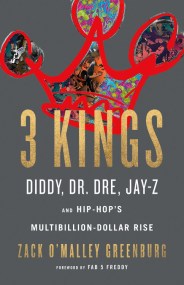Barry Sonnenfeld,
Call Your Mother
Regret the past. Fear the present. Dread the future.
We have updated our Privacy Policy Please take a moment to review it. By continuing to use this site, you agree to the terms of our updated Privacy Policy.
Soul Full of Coal Dust
A Fight for Breath and Justice in Appalachia
Description
In this devastating and urgent work of investigative journalism, Pulitzer Prize winner Chris Hamby traces the unforgettable story of how these trends converge in the lives of two men: Gary Fox, a black lung-stricken West Virginia coal miner determined to raise his family from poverty, and John Cline, an idealistic carpenter and rural medical clinic worker who becomes a lawyer in his fifties. Opposing them are the lawyers at the coal industry’s go-to law firm; well-credentialed doctors who often weigh in for the defense, including a group of radiologists at Johns Hopkins; and Gary’s former employer, Massey Energy, the region’s largest coal company, run by a cantankerous CEO often portrayed in the media as a dark lord of the coalfields. On the line in Gary and John’s longshot legal battle are fundamental principles of fairness and justice, with consequences for miners and their loved ones throughout the nation.
Taking readers inside courtrooms, hospitals, homes tucked in Appalachian hollows, and dusty mine tunnels, Hamby exposes how coal companies have not only continually flouted a law meant to protect miners from deadly amounts of dust but also enlisted well-credentialed doctors and lawyers to help systematically deny much-needed benefits to miners. The result is a legal and medical thriller that brilliantly illuminates how a band of laborers — aided by a small group of lawyers, doctors and lay advocates, often working out of their homes or in rural clinics and tiny offices – challenged one of the world's most powerful forces, Big Coal, and won.
A deeply troubling yet ultimately triumphant work, Soul Full of Coal Dust is a necessary and timely book about injustice and resistance.
What's Inside
Gary Fox didn’t complain, but he didn’t put the company’s sticker on the bumper of his truck either. Day after day, he’d climb in the mantrip and take a thirty-minute ride down to the dark caverns where black dust floated everywhere and coated everything. The haze was especially bad for roof bolters like Gary. They had front-row seats for the spectacle of the hulking mining machine ripping through coal, and their own machinery gouged out openings in the mine roof. Sometimes, it was difficult to see through clouds of dust. They’d guzzle water from gallon jugs they lugged underground in an attempt to clear the grit from their throats. Some men wore respirators at times, but the devices were bulky and uncomfortable. They got in the way, might not work right if a man had a beard, and were, at best, an imperfect last line of defense against the thick fog that the machines unleashed.
After a day underground and another thirty-minute ride on the mantrip, Gary would emerge from the mouth of the mine covered in black dust. Unlike some mines, Birchfield didn’t have a bathhouse, just a changing room with a toilet and a place to hang up soiled work clothes. For much of his six-year tenure with the company, Gary carpooled with scoop operator Stewart and fellow roof bolter Bailey, commuting an hour and a half each way. Lots of workers made similarly long drives to mines tucked in rural hollows; you went where the jobs were, largely at the mercy of both the vagaries of global energy markets and the predilections and ambitious gambles of coal bosses such as Kizer.
After finishing a shift, Gary and his two riding buddies would meet up at the vehicle of whoever’s turn it was to drive that week. When it was Gary’s, they piled into his black pickup. He had different models over the years but eventually settled on the Toyota Tacoma. He’d buy a cheap one, run the hell out of it, get under the hood himself to keep it going well past its natural life, then start the cycle anew.
Gary would steer the truck onto the two-lane blacktop of Route 85, entering the rural county’s circulatory system: road, river, and rail line twisting in tandem — arteries bringing metal and men, veins sending fuel and waste. He drove south, tracing the western flank of the Coal River Valley, a sort of inverted V formed by the Big and Little Coal Rivers, which flowed north and converged near the state capital of Charleston.
The road snaked through densely forested mountains, still tracing the path of the river, which gathered strength from creeks fed by mountain headwaters. Narrow roads shot off alongside these creeks into hollows where people lived in small homes and trailers deep in the mountain’s shadow. For generations, people here had worked the mines, grown potatoes and beans, hunted turkey and deer, and foraged for mulberries, ramps, and ginseng. In small riverside communities, families set aside some of the crops from their vegetable gardens to can for winter, and miners congregated at the general store, identifiable by their dust-covered clothing studded with reflective bands. Belt lines poked out from openings in the sides of mountains, conveying coal to nearby tipples, where it was sorted and loaded into trucks or railcars that rattled through towns.
On and on, the landscape of the coalfields unfolded before Gary in rhythmic cycles: sugar maples, white oaks, creek; house, church, general store; belt line, coal pile, railyard. It is a region steeped in beauty and blood, an expanse of rugged terrain that is the heart of Appalachia and the embodiment of its contradictions — breathtaking vistas alongside the scars of faded industrialism, a wealth of natural resources but continued isolation and poverty, indefatigable optimism despite a legacy of neglect and repression.
It’s here where eighteenth-century land speculators staked their claims and clashed with American Indians, where one nineteenth-century prophet of the United States’ manifest destiny saw the work of divine hands in what lay beneath the mountains: immense deposits of coal “scattered by the hand of the Creator with very judicious care, as precious seed, which, though buried long, was destined to spring up at last, and bring forth a glorious harvest.” This bounty helped fuel the Allied victories in World Wars I and II, and it powered the industrialization that brought America prosperity. The riches of the earth and the sweat of the people here helped make the United States a global superpower.
Yet it’s here where prospectors conned mountaineers out of their share of the riches. Where, in the pursuit of these riches, coal bosses sent thousands to their deaths in one needless disaster after another and dominated every corner of community life like feudal landlords. Where one species of hired gun suppressed resistance on the ground with deadly force and another suppressed it from afar in courts and legislative chambers.
And still, it’s here where average people have banded together, defied disheartening defeats, and won striking victories with dogged grassroots activism. Because of the allure of southern West Virginia’s buried treasure and its defiant mountaineer ethos, the area has been the scene of historic clashes between rank-and-file agitators and the coal industry that so controlled their lives. Some of the bloodiest battles in the history of American labor have played out here.
Gary’s commute took him through the mountain towns that, in 1921, had supplied many of the thousands of miners who, in the throes of a bitter unionization drive, had taken up arms and fought in what became known as “the Battle of Blair Mountain.” From Boone County, the miners had marched west for a deadly shootout with about three thousand hired guns and company-aligned volunteers led by the sheriff of neighboring Logan County. By various tallies, anywhere from twenty to fifty men died before President Warren G. Harding sent in federal troops, putting an end to what is often called the largest armed insurrection since the Civil War.
More than six decades later, these small communities nestled in hollows and valleys were beginning to feel the sting of the Appalachian coal industry’s decline — a trend that would only accelerate in coming years as production continued to shift to surface mines in the West, as fracking yielded a glut of cheap natural gas that increasingly displaced coal as the fuel of choice for power generation, and as market forces and, to a lesser degree, environmental regulations led to the closure of some coal plants, crimping demand. Precipitous declines in coal jobs would hollow out hamlets throughout central Appalachia. Poverty rates would rise. These same communities would be ravaged by a flood of prescription opioids pushed by drug companies and distributors along with a related wave of potent illicit drugs. West Virginia would come to experience the highest rate of overdose deaths in the country, driven in large part by the hard-hit counties of the southern coalfields.
Navigating the mountainous terrain made for white-knuckle driving even for Gary, who was accustomed to the narrow roads with sharp curves that wound through much of the region. The fastest route home was across Bolt Mountain, a notoriously treacherous trip. The ever-present fog was sometimes so thick Gary could barely see farther than his headlights. Near the summit, which was more than three thousand feet high, hazardous weather conditions were amplified. Two inches of snow at the base could become eight inches at the peak. The two-lane road that had been cut into the mountain offered little room to maneuver around common impediments — falling rocks or the massive coal trucks that made heavy use of the road. “Just getting to work was more dangerous than anything we ever did in the mines,” Stewart said, only half jokingly.
On these long rides, Gary and his commuting buddies sometimes traded stories, especially about their families; often, the two who weren’t driving would get some much-needed sleep. Back at their meeting place outside Beckley, they’d part ways and head home for a few precious hours of rest or time with loved ones.
Finally, after at least nine hours underground and three hours on the road, Gary would pass from rural terrain into the commercial landscape of small-town America: all-night diners and fast-food joints, chain hotels and grocery stores. Then into planned communities and cul-de-sacs. And finally, home.
Inside the two-story house, he would peel off his clothes and place them in a pile separate from the rest of the laundry. Once a week, his wife, Mary, took them to a laundromat; she didn’t want the coal dust clogging up their home washing machine.
In the shower, he tried to scrub off the finely ground coal dust that had found its way into nearly every cranny and crevice of his body. He had a brush for the dust embedded under his fingernails. In front of the mirror, he pulled at the skin below one eye and, with a towel, wiped away the coal dust that had collected at the lash line. He did the same thing for the top lid, then repeated the process on the other eye. Some men didn’t bother with these thin black rings that folks in the coalfields called “miner’s mascara,” maybe out of laziness, maybe just pride in the job.
But Gary wouldn’t have it. Mining was his job, not his life. Many men were brimming with stories of underground exploits, and in their spare time, they grabbed beers with work buddies. Not Gary. When he was underground, he was all business; he refused to bring the job home. It wasn’t that he didn’t like the work — he just had more important things to do than rehash the day’s labors. Whatever spare time he did have was spent with Mary and their adolescent daughter, Terri; he wasn’t going to waste that time carrying on about the mines. And he certainly wasn’t going to go out to eat with them looking like he was wearing makeup.
From the medicine cabinet Gary grabbed pills to loosen the joints in his arthritic hands. His body ached from a lifetime of wounds. While serving in Vietnam, he’d been in a truck accident, and sheet metal had shattered his foot. Falling rock in a mine had crushed his shoulder. His hands locked up from years of drilling metal bolts through layers of sandstone and shale.
Six days a week, sometimes seven, Gary repeated these rituals in a meticulous attempt to scrub his world of coal dust. But over the years, it had seeped inside him, lodged itself so deeply that there was no scrubbing it away. It was amassing in his lungs, and each day underground added to that load little by little. Gradually, these fine black specks would stain and scar what they touched; specks would reach toward other specks until they coalesced and turned chunks of tissue into useless black masses.
But Gary was focused on what came with the dust: the best paycheck and health insurance around. In southern West Virginia, the clearest path to earning a good living had long been coal mining. It was coal mining that would allow him to provide the kind of life he had in mind for Mary and Terri.


